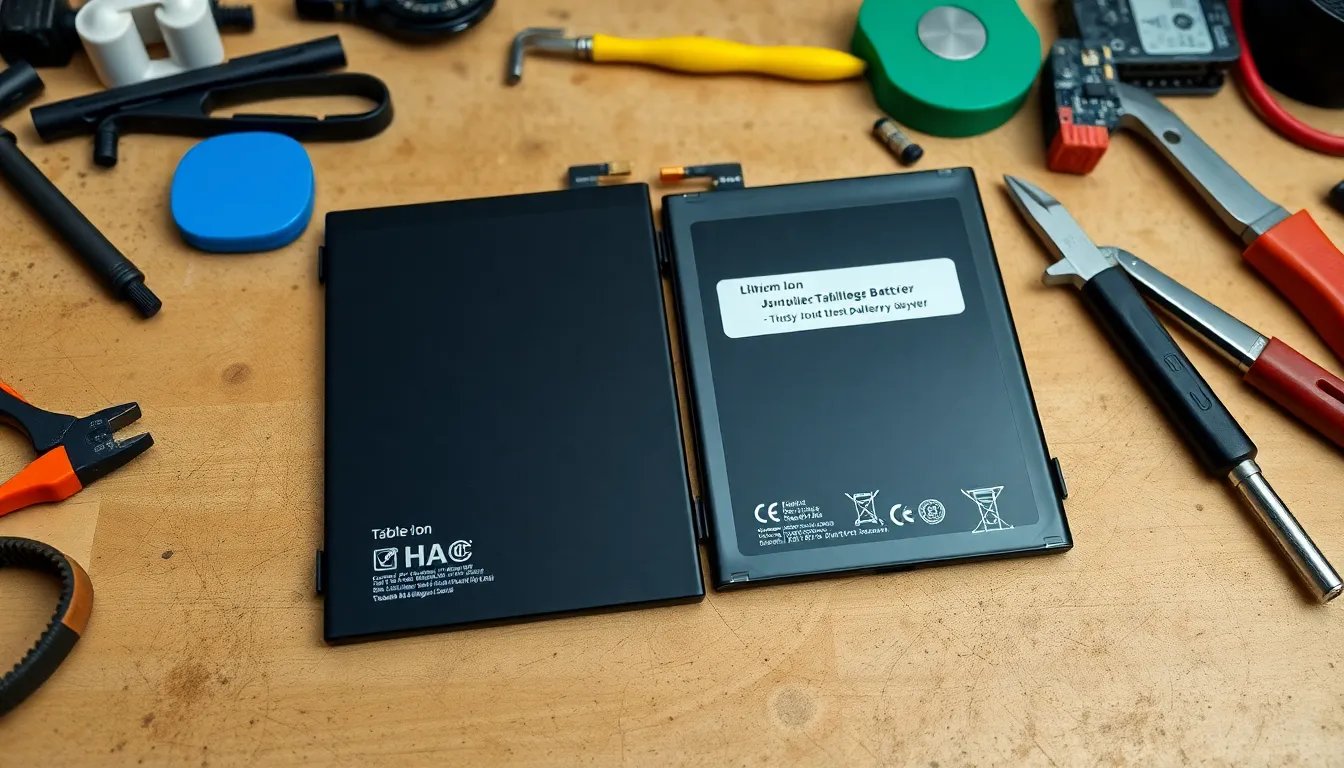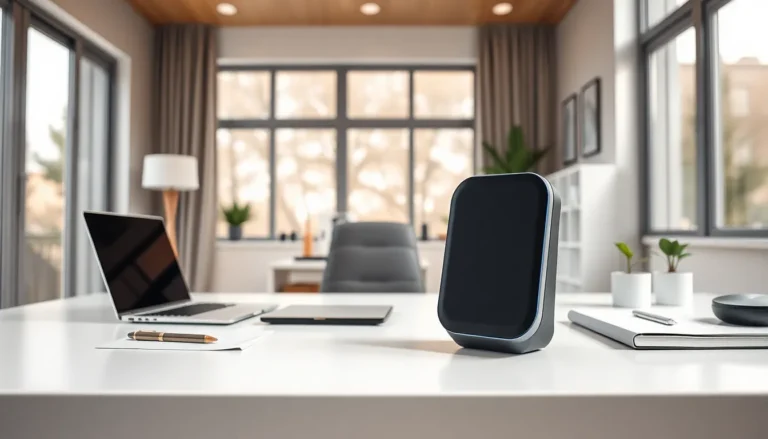Tablets have become essential companions in our daily lives, whether for binge-watching shows or tackling work tasks on the go. But what happens when that trusty tablet starts losing its charge faster than a kid in a candy store? A declining battery isn’t just a nuisance; it’s a call to action.
Table of Contents
ToggleUnderstanding Tablet Battery Replacement
Maintaining a tablet’s battery health is crucial for optimal device performance. Understanding when to replace a battery prevents inconveniences during use.
Importance of Battery Health
Battery health directly affects device efficiency and longevity. A well-maintained battery supports better performance, ensuring smoother multitasking and faster app launches. Poor battery health often leads to unexpected shutdowns and slower performance. Regular monitoring can help users maximize their tablet’s lifespan. Keeping a tablet in optimal condition requires attention to battery health, which ultimately impacts overall functionality.
Signs You Need a Replacement
Specific indicators signal that a tablet battery needs replacing. Users often experience rapid battery drain during usage. Unusual swelling in the device’s casing also suggests a battery issue. Frequent overheating during charging can indicate a failing battery. Additionally, devices not holding a charge or malfunctioning while plugged in often require immediate attention. Recognizing these signs early prevents further damage and ensures that the tablet remains functional and reliable.
Types of Tablet Batteries

Tablets typically utilize two main types of batteries: lithium-ion and lithium-polymer. Understanding these types aids in selecting appropriate replacements.
Lithium-Ion vs. Lithium-Polymer
Lithium-ion batteries are common in many devices. They’re known for their high energy density and longevity. Devices often rely on these batteries for performance. Lithium-polymer batteries, however, offer flexibility in form factor. Their lightweight design allows for slimer devices. Both types possess unique benefits, with lithium-ion generally being more widely used. Users should check compatibility before replacement since these batteries differ in size and performance characteristics.
Compatibility Considerations
Compatibility plays a critical role in battery replacement for tablets. Different tablet models require specific battery types. Seeking out the original specifications ensures optimal performance. Manufacturers provide this information in device manuals or on official websites. Using a non-compatible battery can lead to functionality issues or even damage. When replacing a battery, matching the voltage and capacity is essential. Verifying these details prevents complications during installation. Always consult professional services for assistance if uncertain about battery choices.
DIY Tablet Battery Replacement
Replacing a tablet battery can enhance device performance significantly. A careful approach ensures safety and effectiveness during the process.
Tools Required
Gather essential tools before starting the replacement. A small Phillips screwdriver is needed to open the tablet casing. A plastic prying tool helps to avoid damaging the device while lifting the screen. Use a suction cup for better grip, especially for tablets with glass fronts. Tweezers facilitate handling small battery connectors. Lastly, an anti-static wrist strap prevents static electricity discharge, protecting sensitive components.
Step-by-Step Guide
Follow clear steps to replace the battery effectively. First, power off the tablet and remove any external accessories. Next, carefully open the tablet using the plastic prying tool, taking care around the edges. After exposing the battery, disconnect it from the motherboard gently using tweezers. Remove the old battery carefully and place the new one in its position. Ensure connections are secure, then reassemble the tablet. Finally, power on the device to confirm successful battery installation.
Professional Tablet Battery Replacement Services
Tablet battery replacement often requires expertise, especially when dealing with complex devices. Professional services ensure safety and reliability during the replacement process.
When to Consider Professional Help
Recognizing advanced issues with a tablet battery warrants professional intervention. If the device shows signs like swelling or frequent overheating, it’s crucial to consult a technician. Complex disassembly and reassembly can lead to further damage if attempted without expertise. Seeking professional help guarantees that the right battery type is chosen, ensuring compatibility with the specific model. Tools necessary for this task often require experience to handle without causing damage. Professionals can also offer insights into maintaining battery health post-replacement, enhancing the tablet’s longevity.
Cost of Professional Replacement
Cost considerations for professional battery replacement vary by service provider and device model. Prices typically range from $50 to $150, depending on the complexity of the repair and the specific tablet brand. Additional costs may arise if further repairs are necessary. Many professionals provide warranties for their work, offering peace of mind after replacement. Evaluating several options can help identify the most cost-effective solution. Investing in professional service often results in better performance and fewer long-term issues.
Tips to Extend Tablet Battery Life
Extending tablet battery life is essential for maintaining device performance. A few effective strategies can help prolong battery longevity.
Charging Habits
Charge tablets when they reach 20% for optimal health. Avoid fully depleting the battery, as this can lead to faster deterioration. Keeping tablets between 20% and 80% during charging represents the sweet spot for battery maintenance. Use the original charger for the best compatibility and efficiency. Instead of overnight charging, consider unplugging it once fully charged. This simple practice can prevent overcharging, improving overall battery lifespan.
Software Optimization
Optimize software settings to enhance battery performance. Reducing screen brightness adjusts power consumption significantly. Disable automatic updates and location services when not in use, since they drain battery life. Limiting background app activity also helps conserve energy. Developers often design apps to run at all times, but toggling these settings can lead to better battery utilization. Regularly updating the operating system allows devices to benefit from improved battery management features. Set the tablet to automatically enter sleep mode after a brief period of inactivity; this setting automatically helps save battery life as well.
Tablet battery replacement is a crucial step in maintaining device performance and longevity. By recognizing the signs of battery deterioration early on, users can prevent further issues and ensure their tablets remain reliable. Whether opting for a DIY approach or seeking professional assistance, understanding the specific battery type and compatibility is essential for a successful replacement.
Incorporating effective charging habits and software optimizations can further enhance battery life. With the right care and timely replacements, tablets can continue to serve their users efficiently, supporting both work and entertainment needs for years to come.









